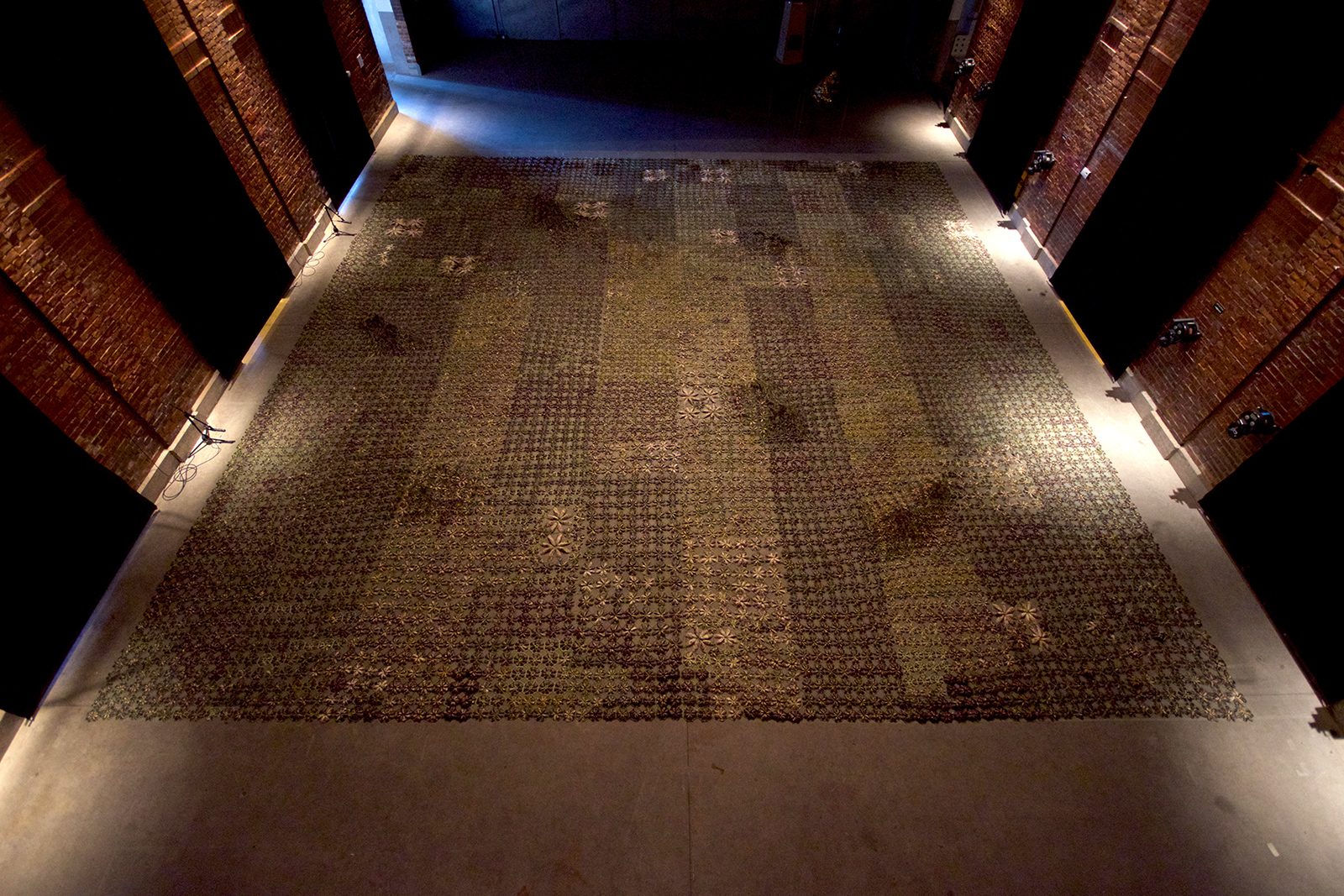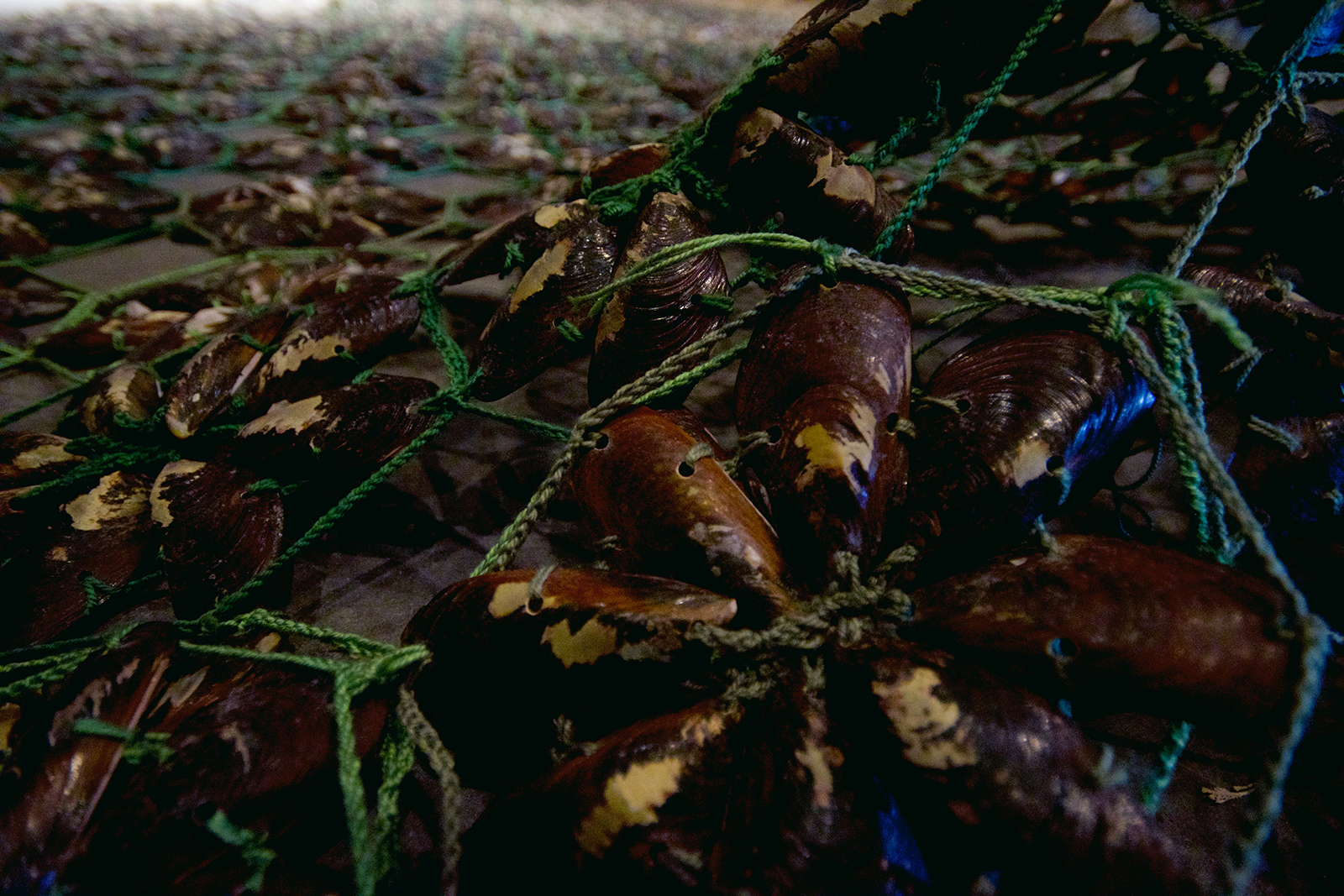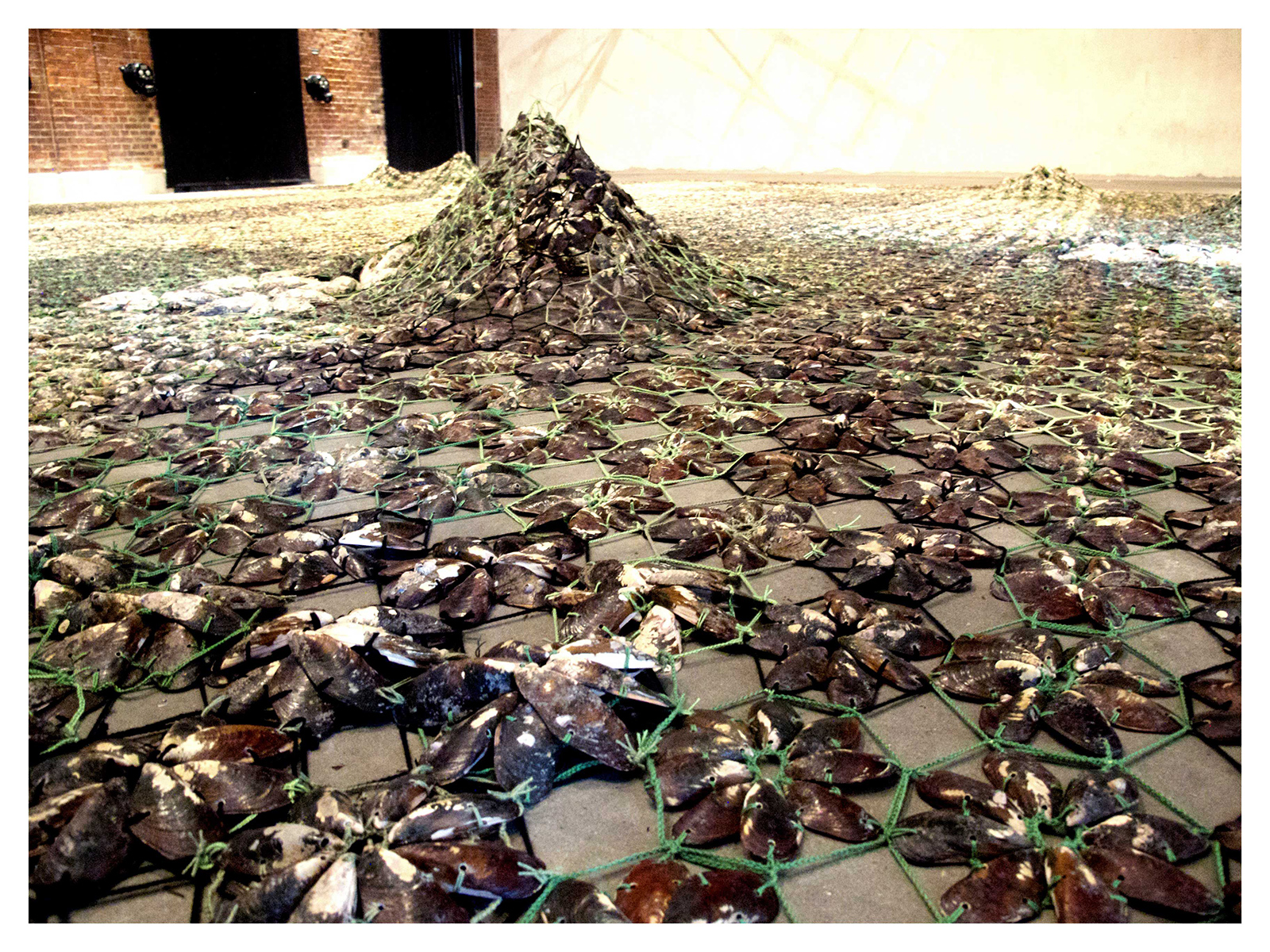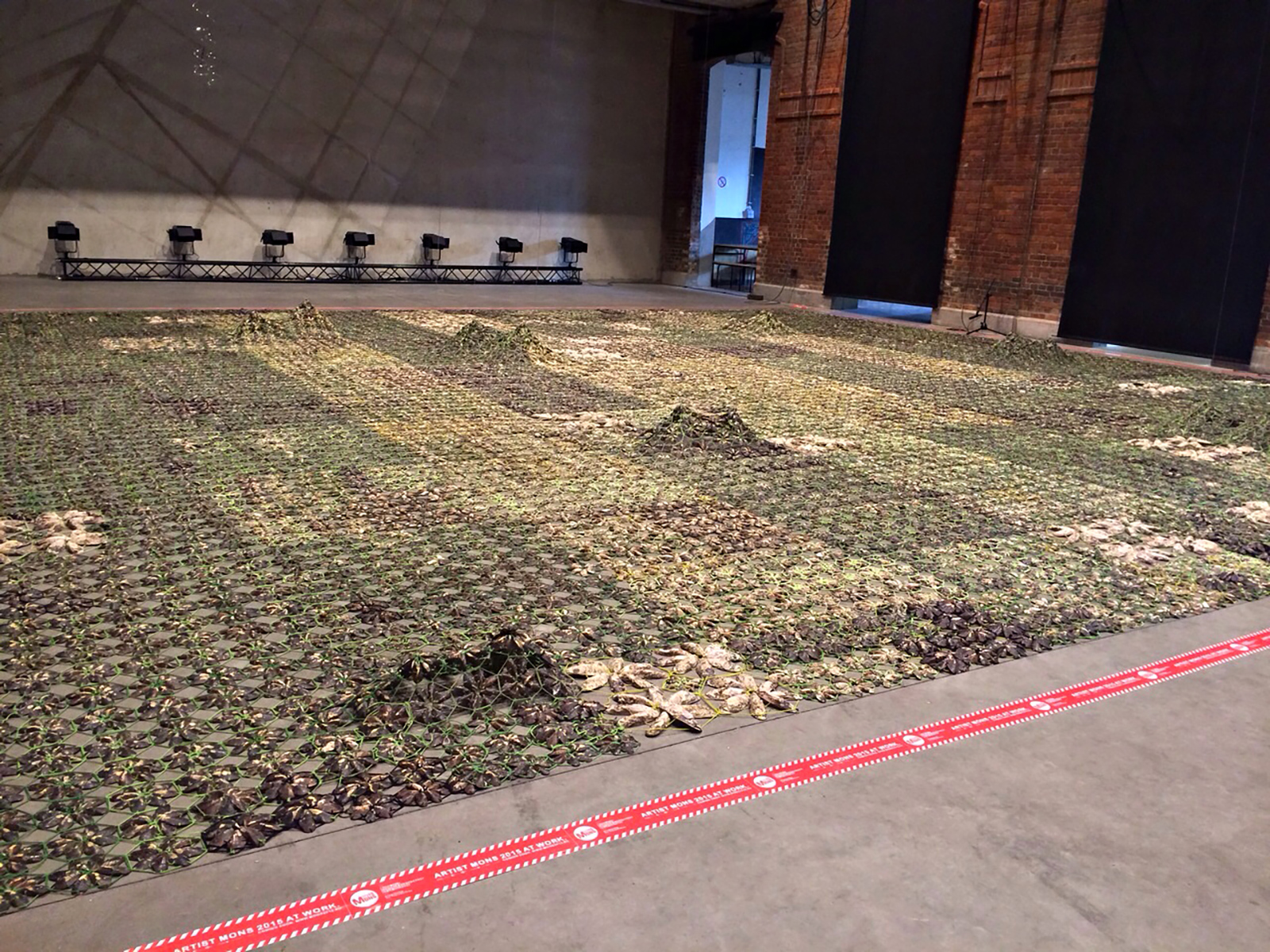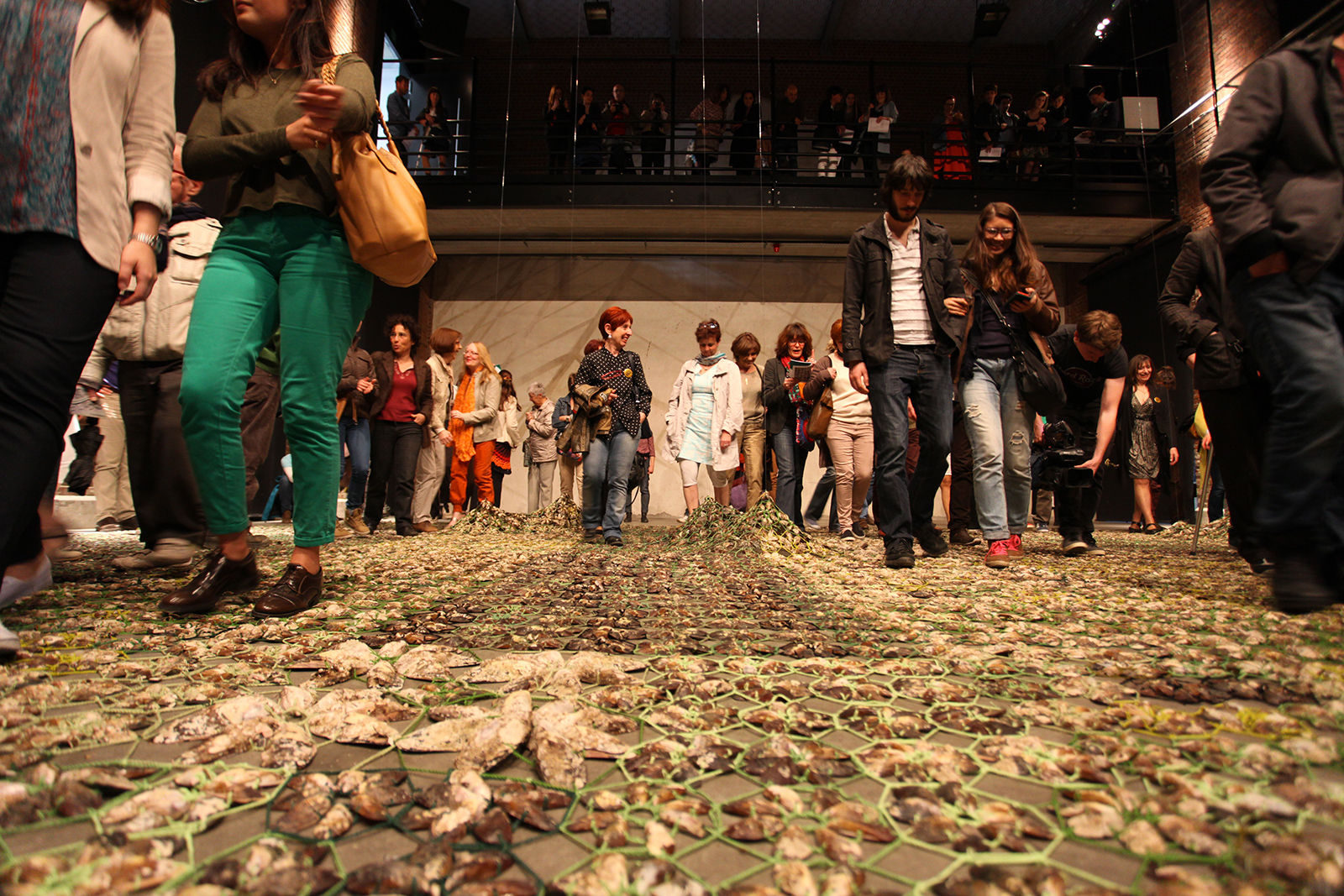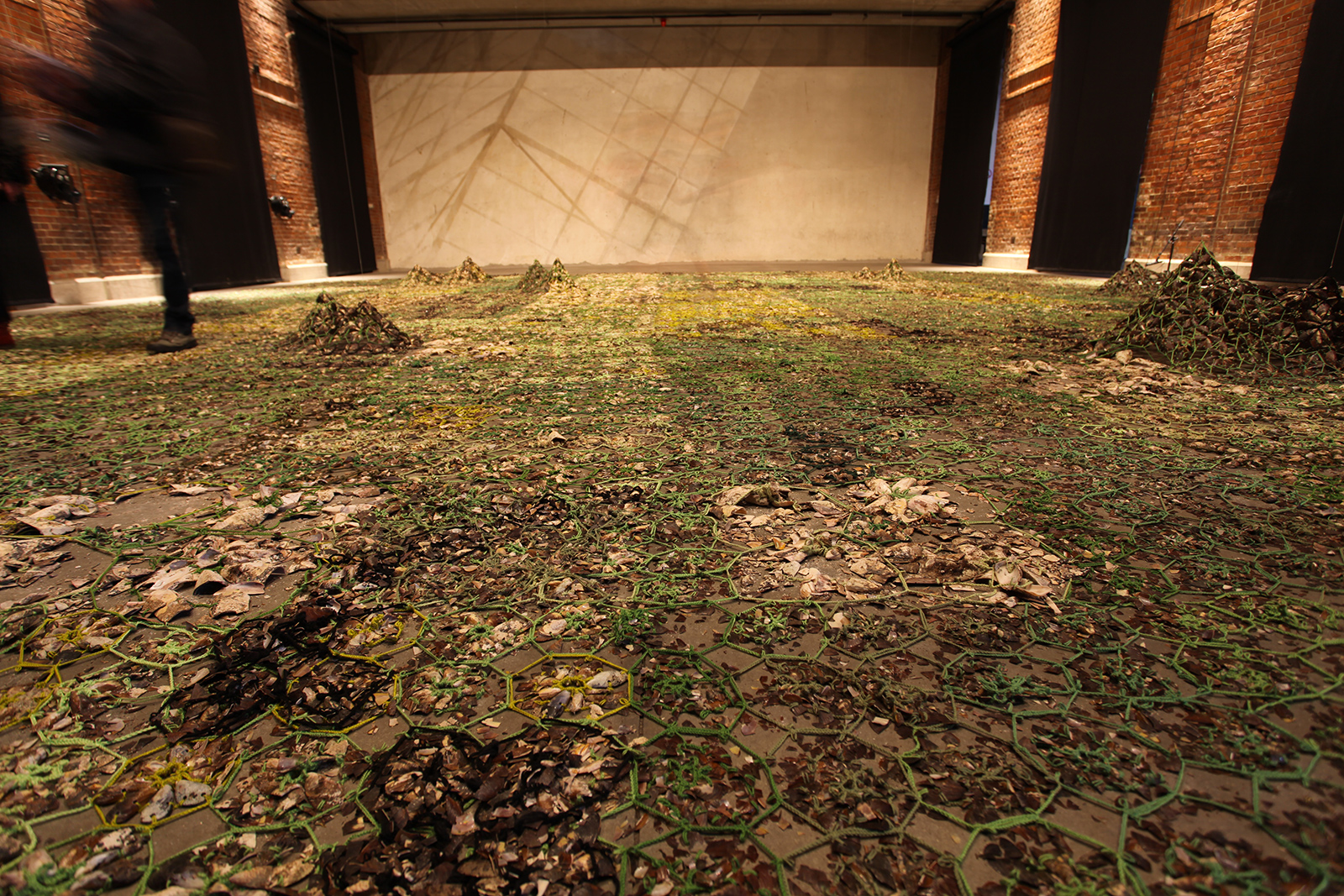The collaborative installation, Casablanca Green, evolved in response to an exploration, to an invitation, to a geographical place, to the theme of the exhibition “Casablanca, Énergie Noire”. Invited to produce an installation for an exhibition about her native city for Mons 2015, Amina Agueznay chose to respond by turning away from narratives of sprawling urbanity and chaos to imagine a future scenario that shifts from black to green.
The point of departure is the space itself, or rather the floor of the space, an open-plan multi-purpose hangar for performance and exhibits. The role of the space imposes a reflection upon the work in terms of performance, and the nature of matter that would provoke an interactive experience. As is her custom, Agueznay creates matter for her installations, and for Casablanca Green she drew upon her experience with an earlier work, Skin (2011), created in a town along Morocco’s Atlantic coast where she came across heaps of mussel shells discarded on the beach. What better medium to establish parallel between Morocco and Belgium than the humble mussel, common to both countries, once known as “poor man’s meat” and elevated here to a contemporary medium?
Humility of medium, nobility of purpose. Amina Agueznay sublimates the object in deference to the collaborative act. The inherent, exquisite beauty of the work is secondary to the shared gesture of its creation. Summoning her architectural and design training, as well as her extensive research and collaboration with heritage artisans, Agueznay collected over fifty thousand shells, organising them by size as a mosaic craftsman might plan his zellij, then weaving them into a fragile tapestry. Working with a team of 16 artisan-collaborators, she engineered a method of assembly, drilling dual holes in each individual shell, attaching them in octagonal groups of eight with variegated green yarns, like strands of seaweed. The motif repeats 6,400 times across individual bands, each two metres by ten.
The handicraft is intricate, the dimensions monumental, the geometry rigourous, the references multiple. Seen from above, the effect is architectural, archetypal, organic, like an ancient mosaic emerging from centuries of oblivion. Mother of pearl beneath, black husk and barnacle above. Carpet as seashore. Brute matter treated as if of the finest gold thread or precious stones. The space is transformed, the sea is present, as are the spirits of those who gave birth to it.
If there is birth there comes an end, mirrored performances that define the life of the work. Imagined, shaped, and constructed under many hands, the piece is then laid at the feet of the audience.
The final phase of its existence in Mons is another collaboration, a performance in which the spectators enter the work, crushing the carpet beneath their many feet. Amplified by microphones installed at floor level, the delicate shells explode in an act of deliverance, as violent as any other natural phenomenon. The shared moment is ecstatic, the seeming destruction giving rise to something else, revealing the green, the future, the gesture of colour emerging from the shattered fragments.
In the wake of explosion, silence returns to the space. Casablanca Green is ephemeral, a wave returning to the ocean, a hint of green emerging from ashes.
Kristi Ann Jones
-
Installation
Over fifty thousand shells. Working with a team of 16 artisan-collaborators.
-
Photo Credit
Dany Hanneuse Zineb Andress Arraki
